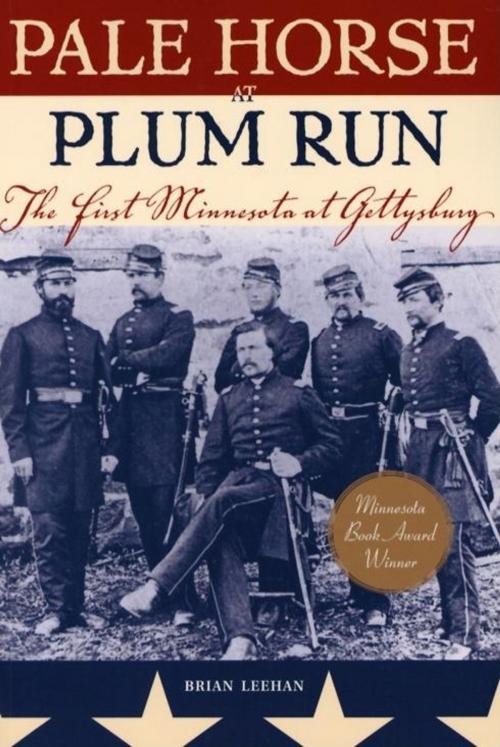Pale Horse At Plum Run
The First Minnesota at Gettysburg
Nonfiction, History, Americas, United States, Civil War Period (1850-1877), Military| Author: | Brian Leehan | ISBN: | 9780873516891 |
| Publisher: | Minnesota Historical Society Press | Publication: | August 1, 2009 |
| Imprint: | Minnesota Historical Society Press | Language: | English |
| Author: | Brian Leehan |
| ISBN: | 9780873516891 |
| Publisher: | Minnesota Historical Society Press |
| Publication: | August 1, 2009 |
| Imprint: | Minnesota Historical Society Press |
| Language: | English |
Minnesota Book Award Winner!
The smoke had just cleared from the last volley of musketry at Gettysburg. Nearly 70 percent of the First Minnesota regiment lay dead or dying on the field—one of the greatest losses of any unit engaged in the Civil War. Pale Horse at Plum Run is the study of this single regiment at this crucial moment in American history. Through painstaking research of firsthand accounts, eyewitness reports, and official records, Brian Leehan constructs a narrative remarkable for its attention to detail and careful reportage.
Word of the First's heroic act at Gettysburg quickly spread along Union lines and back to Minnesota. Their stand late on July 2, 1863, stopped a furious rebel assault and saved the day for the Union. Emerging from the chaos of battle, however, firsthand reports contradicted each other. Confused officers and frightened soldiers told very different stories of the day's hearsay and camp gossip for their sources of information. All of this leaves the historical investigator to ask, what really happened that day at Plum Run?
In order to answer that question, Leehan performs superlative historical detective work. By focusing on the men themselves—and their accounts of the engagement—he weaves together a narrative of the First's action on July 2 and 3. Those who escaped the scythe of battle the first day lived to play a pivotal role the next in rebuffing the most famous infantry assault in American military history, Pickett's Charge. By tracking the movements of individual soldiers over the field of battle, Leehan reconstructs in amazing detail the story of this remarkable band of soldiers.
In his investigation of the battle Leehan raises important questions about how we can really know the truth about the past. In cogent appended essays, the author muses on the lack of standardized timekeeping in the mid-nineteenth century, on the nature of Civil War weaponry, and on the emergence of a heroic mythology after the war.
Minnesota Book Award Winner!
The smoke had just cleared from the last volley of musketry at Gettysburg. Nearly 70 percent of the First Minnesota regiment lay dead or dying on the field—one of the greatest losses of any unit engaged in the Civil War. Pale Horse at Plum Run is the study of this single regiment at this crucial moment in American history. Through painstaking research of firsthand accounts, eyewitness reports, and official records, Brian Leehan constructs a narrative remarkable for its attention to detail and careful reportage.
Word of the First's heroic act at Gettysburg quickly spread along Union lines and back to Minnesota. Their stand late on July 2, 1863, stopped a furious rebel assault and saved the day for the Union. Emerging from the chaos of battle, however, firsthand reports contradicted each other. Confused officers and frightened soldiers told very different stories of the day's hearsay and camp gossip for their sources of information. All of this leaves the historical investigator to ask, what really happened that day at Plum Run?
In order to answer that question, Leehan performs superlative historical detective work. By focusing on the men themselves—and their accounts of the engagement—he weaves together a narrative of the First's action on July 2 and 3. Those who escaped the scythe of battle the first day lived to play a pivotal role the next in rebuffing the most famous infantry assault in American military history, Pickett's Charge. By tracking the movements of individual soldiers over the field of battle, Leehan reconstructs in amazing detail the story of this remarkable band of soldiers.
In his investigation of the battle Leehan raises important questions about how we can really know the truth about the past. In cogent appended essays, the author muses on the lack of standardized timekeeping in the mid-nineteenth century, on the nature of Civil War weaponry, and on the emergence of a heroic mythology after the war.















